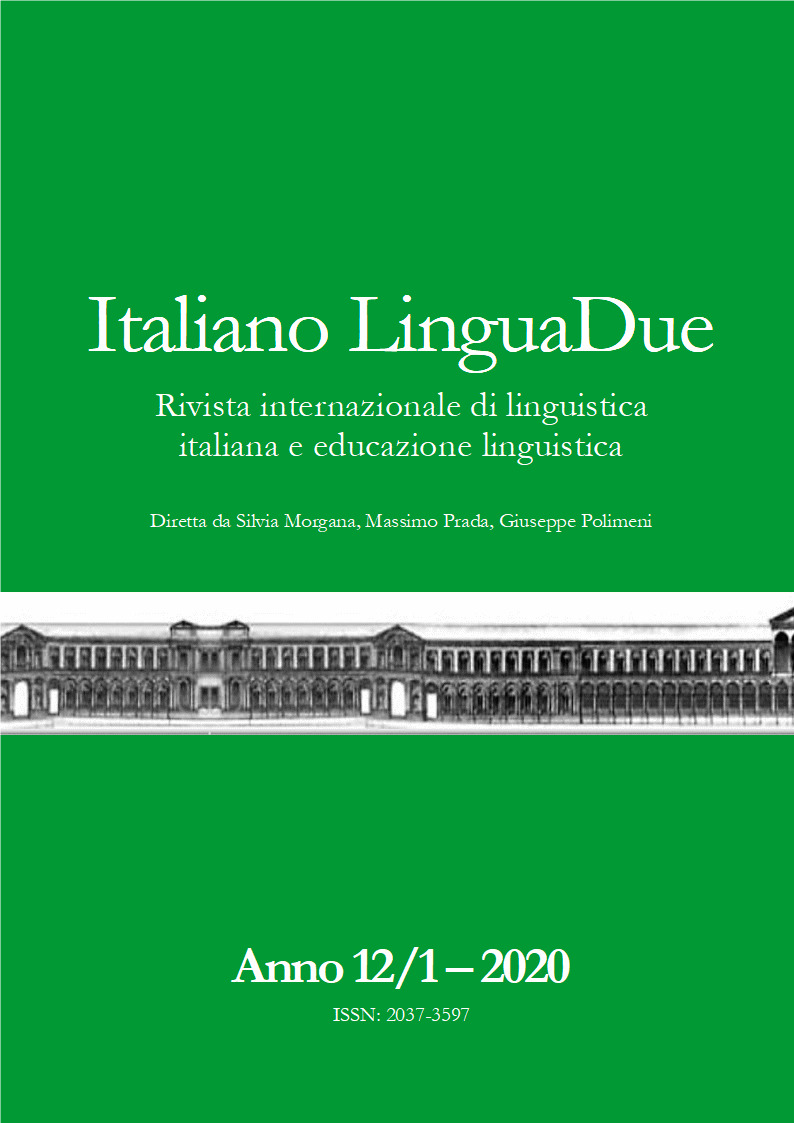LA MAPPATURA DEL TESTO CENTRATA SUGLI STUDENTI
DOI:
https://doi.org/10.13130/2037-3597/13962Abstract
Si intende per mappatura del testo una ricognizione dei nuclei informativi di un testo verso i quali si può dirigere l’attenzione di un lettore o di un ascoltatore (informazioni target). Tradizionalmente l’idea, formulata da Sarig (1989) e poi messa a punto da Urquhart e Weir (1998) e da Green (2017), prevede il coinvolgimento di un gruppo di item writer. In questo articolo la mappatura del testo comporta invece l’elicitazione delle informazioni target da parte di allievi di competenza pari a quella dei candidati a cui la prova è diretta. Riteniamo che la mappa che così si ottiene sia più rappresentativa dei processi cognitivi di cui i test taker danno prova. Gli esempi condivisi riguardano testi orali, più difficili da mappare rispetto a quelli scritti.
Textmapping: The Learner-centered Approach
Textmapping is understood as detection of target information to which a reader/listener’s attention can be directed. Traditionally, this idea, which was formulated by Sarig (1989) and then developed by Urquhart and Weir (1998), as well as Green (2017), involves a group of item writers. In this paper, by contrast, textmapping involves students of a similar proficiency level as those at whom the test is directed. We consider that the map obtained in this way is more representative of the test takers’ cognitive processes. The examples shared regard oral texts, which are more difficult to map than written ones.




